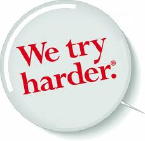
 Getting Craig Cline back online
Getting Craig Cline back online 
In 2006 a good friend Craig Cline died of ALS. He was very young and it was a terribly sad event.
I volunteered to set up a memorial site for Craig, but at some point I moved servers and the site got disconnected from the name. I think this has happened to a lot of my sites. I'm going to go through them carefully and try to future-safe them best I can.
For example, my father's mbatoolbox site is a Manila site. But in my search for the Craig Cline source text, I stumbled across the OPML for his site. That will fit in much better with what I have going. And my dad loved outliners. So it's more appropriate, I think, to guide his content down through the years in a static OPML boat than in a Manila site.
Anyway, back to Craig's site.
I tried searching for it in Google, and was very depressed to see what came back. Oy. It pointed into some random site which is running on the server that Craig's site used to be hosted on. Not good.
 I realized that a fancy domain name makes sense in the first year or so after someone passes. Then it pays to get the archive into some much larger bundle of static content that makes it more likely to survive over the years. And do a permanent redirect to the longer address, so the search engines pick it up, and get back in synch with the correct content. That way when someone looks up Craig, they aren't told about some random engineering product that just happens to be hosted at the same IP address that my server used to run on. Whew!
I realized that a fancy domain name makes sense in the first year or so after someone passes. Then it pays to get the archive into some much larger bundle of static content that makes it more likely to survive over the years. And do a permanent redirect to the longer address, so the search engines pick it up, and get back in synch with the correct content. That way when someone looks up Craig, they aren't told about some random engineering product that just happens to be hosted at the same IP address that my server used to run on. Whew!
Long-term the domain for the site, craigclinefriends.com, is not going to exist (or it might point to a porn site, be careful). I turned off auto-renew for it on GoDaddy. It'll stick around until 2013 (they had it auto-renewing for two years at a time, and it just renewed in Sept). I figure by then all search engines will have caught on to the permanent redirect.
I'm also trying to reconstruct conventionbloggers.com, which was a river-of-news aggregator for both the Democratic and Republican conventions of 2004. It was probably the only aggregator running for those conventions. Definitely of some historic value. I'm going to do the same thing as I did with Craig's site. When I find it. ![]()
 Who would play Steve Jobs?
Who would play Steve Jobs? 
I knew there would be some interesting answers to the question.
And here they are... (Taken from Twitter responses and comments here.)
The dude from the I'm A Mac commercials. (Justin Long.)
A young James Stewart
Denzel Washington.
Noah Wyle.
Ben Kingsley. (Dressed as Gandhi.)
CNN already asked the question. (Darn!)
Charlie Sheen. (My own first choice.)
Jack Nicholson. (You can't handle the truth.)
Alec Baldwin. (In his Jack Donaghy role.)
Samuel Jackson. (John Travolta?)
Christian Bale.
Jack Benny.
Jack Valenti.
John Malkovich.
John Cusack.
Ewan MacGregor.
Boris Karloff (Is it a vampire movie?)
Justin Timberlake.
Leonardo DiCaprio.
Seth Rogen (as Woz).
Keanu Reeves. (Laurence Fishburne as Woz? Agent Smith as Bill Gates? The Oracle as Jony Ive?)
Ashton Kutcher.
Richard Dreyfus.
Ed Harris.
Tom Hanks.
Patrick Stewart. (With Data as Woz?)
Fake Steve Jobs. (Good one!)
Colin Farrell.
It should be animated, by Pixar. (Good one!)
Larry David.
Bill Gates. (?)
Ralph Fiennes in full-on sociopath mode.
The guy who plays Hitler in all the Youtube videos.
Johnny Depp.
Robert Downey Jr
Jason Statham. (Assuming it's a heist picture.)
Benedict Cumberbatch.
Humphrey Bogart in the Cain Mutiny.
Tom Cruise.
 Why DNS needs an API
Why DNS needs an API 
 I'm trying to talk Hover into implementing a simple DNS API. We have what we need from Amazon, but it's not a good idea to build on a single vendor's system. Having an alternative to swtich to if there's trouble would be good.
I'm trying to talk Hover into implementing a simple DNS API. We have what we need from Amazon, but it's not a good idea to build on a single vendor's system. Having an alternative to swtich to if there's trouble would be good.
So here's how my outlining software uses the DNS API from Amazon. When outliners are used to author web content they often have a huge linkrot problem, because the address of an object is a function of its location in the outline. Move it, and all previous links broke.
But you use an outliner for its ability to reorganize, and it's that very ability that makes it more likely that links will break.
We used to think this was just a tradeoff you had to live with...
But then we hit on the idea of placing a name on a headline, that stays with it as it moves around. And if that name were managed by DNS, we wouldn't even have to write a resolver for the name, DNS would do most of the work for us! Really neat when an ancient bit of technology ends up solving a very modern problem. Love it.
But -- creating a new CNAME is a major distraction!
This is what you have to do to create a new CNAME.
1. Bring the browser to the front.
2. Choose the Domains page of your DNS provider from your Bookmarks menu.
3. Log in if necessary.
4. Choose the domain from your list of domains.
5. Click the link to edit the zone file.
6. Add a new CNAME.
7. Click Submit and wait.
8. Find your way back to doing what you were doing.
That's why we don't use DNS as a way of marking a spot in a web structure.
But what if, instead, there was a button in my outliner that did most of the work.
1. Click the Add Marker button.
2. Enter a name in a dialog.
3. Click OK.
4. Wait a few seconds.
The important thing is that you didn't have to switch contexts, or load up your brain with a whole other lengthy task and then somehow try to regain the context of your work. You're much more likely, in teh first scenario, to avoid it -- too much trouble. In the second, once you understood what it did, it's relatively painless.
The key is to add an API to DNS so the functionality can be integrated into the editing app.
BTW, we only use a very small subset of the Amazon API. One entrypoint is all that's absolutely necessary, one that creates a new CNAME record.
 O'Keefe stings Rosen, Shirky
O'Keefe stings Rosen, Shirky 
A video was posted on YouTube this evening.
Apparently someone posing as a potential student asked to sit in on a Studio 20 class, and Jay said yes. He secretly recorded part of the guest lecture by Clay Shirky who is on the NYU faculty.
I am a visiting scholar there through the end of this semester.
My thoughts: It's okay to go undercover and publish the result if you actually caught someone doing something inappropriate. Based on what I know about journalism classes, and what Clay does (there's only one quote from Jay in the 10-minute video) he did what guest lecturers do, give their opinions on the topics of the day. This kind of stuff goes on in J-schools everywhere, every day, with people of all political persuasions.
O'Keefe implies that Shirky is somehow responsible for what the NY Times publishes. I don't believe that's true, and it's certainly not substantiated by the video, or even directly said. That's fairly disrespectful of the viewer. Either you're making a claim or you aren't. "This is the guy who decides what goes into the NY Times," appears to be what he wants us to think of Shirky. If so, that is clearly not true (which is probably why he doesn't say it).
Who is O'Keefe and what does he do? Why doesn't he appear on camera? What about the person who recorded the video, why don't we see or hear from him or her? We don't even know this person's name or gender. How can we form an opinion of their veracity if we don't even know who they are?



